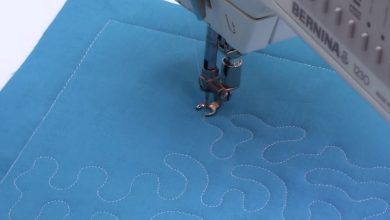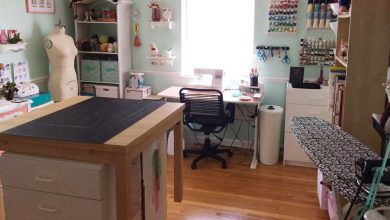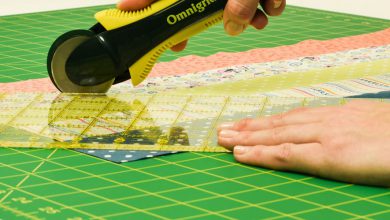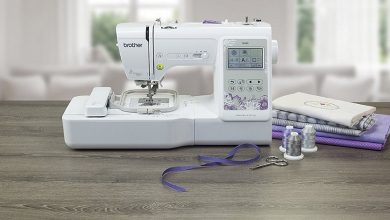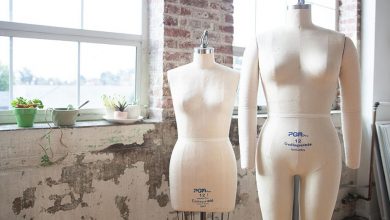Anyone who likes to take on larger sewing projects will know, a reliable quilting sewing machine is a difficult purchase. This is because a lot of reputable products offer similar things, but there are some subtle differences. When you get it right, a quilting sewing machine can be put to a lot of use but you need more than a wide table to be able to make light work of your projects.
This is why we have created the following buyer’s guide. When you know what to expect from a quality product, you’ll be able to tell the reputable ones from the products that are going to have you scrambling for the warranty.
There are certain things a sewing machine must have for it to be suitable for quilting. Not every product is made the same so make sure you have an eye on the following:
Large Throat Space
If you want to be able to feed large pieces of material past the needle, then the quilting sewing machine needs to have the space to accommodate it.
Extension Table
Without this, a sewing machine cannot call itself suitable for quilters. An extension table makes life a lot easier when you are working with larger materials. Quilters need a flat surface to work with so this is one of the most important things to look for.
Up/Down Needle Position
Any sewing machine that has such flexibility is ideal for quilters. Being able to stitch with as much freedom as possible is vital to a quilter and being able to move the needle up and down allows you to fit different types of materials.
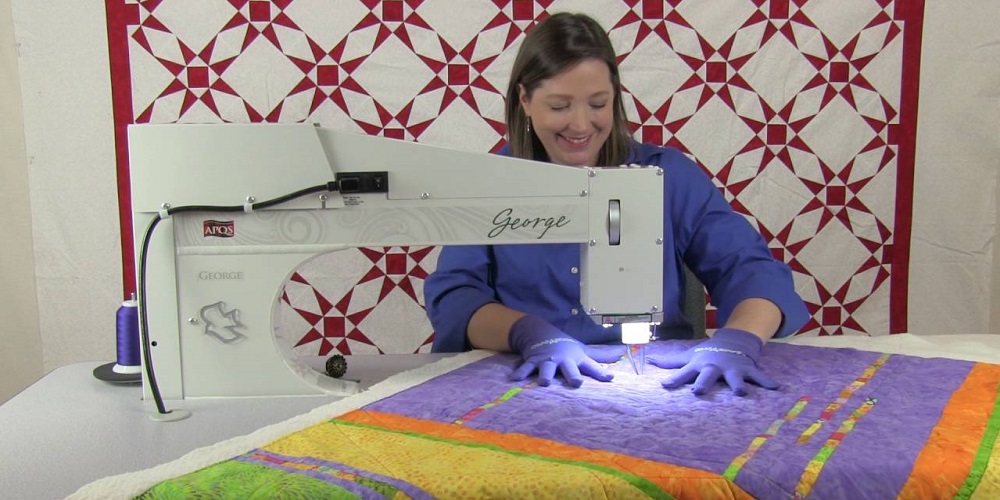
Specialist Quilting Stitches
You read all about built-in stitches and the more the merrier for a lot of serious sewing enthusiasts. A beginner might not need quite so many but the more you get with your machine, the better. This is because you are likely to get more specialist quilting stitches that suit your needs.
Also, consider a product that comes with decorative stitches as they can add a little flair to your designs.
Stitches Per Minute
Whilst you don’t want the machine to work at the top speed on every project, and the faster you go the more mistakes you are likely to make, it is still good to know the power is there.
You can pick up an excellent quilting sewing machine for a reasonable price and get 850 stitches per minute. This is an ample amount for most people’s needs. The professional or well-accomplished sewer will want something more and some high-performing machines give you 1,500 stitches per minute should you need it.
Automatic Buttonholes
There’s no getting away from it, making buttonholes is tricky. Some modern sewing machines make this fiddly task easy and allow you to sew a buttonhole in one step. Plenty of the more advanced models will give you different options and designs to choose from.
Adjustable Stitches
This is more than having plenty to choose from, different quilting tasks require stitches of various lengths and widths. You don’t have to go for a $500 machine to unlock this feature as it is quite common with quilting sewing machines to give you lots of options for your projects.
A Variety of Presser Feet
Some presser feet make it easy for the quilter to complete their projects with accuracy and speed but this is only going to be the case if the product you buy comes with additional presser feet. You might find the all-purpose presser foot to be a little limited and anyone with more experience than a beginner will want as many as possible.
LED Light
Because quilting involves stitching different fabrics to one another and working with different colors, it can be important to buy a quilting sewing machine that has a decent LED light. Most come with them as standard but some are better than others. The reputable brands tend to have LED lights with a long lifespan, meaning you won’t have to change the bulb for a long time.
There are two main techniques to choose from and whilst most people find straight line quilting easier, it is important to find a machine that allows you to use both.
The straight line is often favored by the beginner because it leaves less room for error and helps you to maintain a consistent stitch.
Free-motion stitching will require you to use different skills at the same time. This will mean you need to ensure the tension is right and try to correct uneven stitches until you are well-practiced. However, it does give you a lot of freedom to make curves and patterns where straight line stitching does not.
Unfortunately, the upkeep of a quilting sewing machine is something that beginners tend to neglect. Either that or they know very little about the upkeep of a machine.
Because there are a number of moving parts working at high speeds, the machine will require regular oiling. Check it every few uses and at the very least, once a week when in use.
If you are bringing your quilting sewing machine out of storage then it is good practice to oil it before you use it again.
Although a lot of people like to use a sewing machine with a lot of stitches per minute so they can get their quilting projects finishes in good time, there is something to be said for taking your foot off the pedal a little.
Accuracy is key when it comes to quilting so make sure you don’t get carried away with the top speed of your machine. For better control over the fabric, go at a sensible pace.
There is no getting away from the fact that every sewing machine vibrates. The more powerful the machine, the more likely it is to vibrate a little heavier.
However, there are certain ways you can ensure it doesn’t vibrate so hard. A heavy-duty body made from metal is often the sign of a well-built machine. It can be harder for a sewing machine to provide reliable stitches when the vibrations are extreme, not to mention what it can do to the user during prolonged use.
Felt pads under the machine can help and some brands even provide a mat. A heavy machine might feel like something you want to avoid but heavier machines tend to vibrate less.
Although there are some advanced products that will cost you nearly $1,000 there are plenty of options that are worth considering for less than half that amount.
A beginner won’t need to spend much more than $100 – $150 for a decent product and although this might give you fewer built-in stitches, the best sewing machines in this price range will last a long time.
Anyone looking for something with a bit more power and greater stitches per minute, with more options for different projects can find something suitable for $300.
The professional sewer or anyone who needs an advanced quilting machine can find that $500 goes a long way when you find the right model.
This depends on the machine that you buy but most reputable brands make it easy for beginners to get started and for the more experienced quilter to get enough satisfaction from the features.
If you want an easy product, look for one that has plenty of built-in stitches including a variety of quilting designs and one that has a top drop-in bobbin that is resistant to jamming, as well as automatic threading.
For those who are starting their quilting journey afresh should look for a machine that comes with an instructional DVD or one that has plenty of tutorial videos available online.
There are a few things you can do to protect your machine from the effects of wear and tear. We’ve been over the need to oil it to keep all the moving parts in good working condition but there are other things to remember.
To start with, you’ll want to keep an eye on the sharpness of the needle. They become blunt over time which can make them less accurate and difficult to use. Some people advise changing the needle before you tackle a new project and since needles can be picked up pretty cheap, this isn’t a bad idea.
A protective cover is important too as dust can build up and get into the small spaces, affecting the delicate parts. Don’t forget to clean it regularly and once a year, take it to a professional for a service.
This is how you ensure the quilting sewing machine you choose operates at a high standard for as long as possible.

